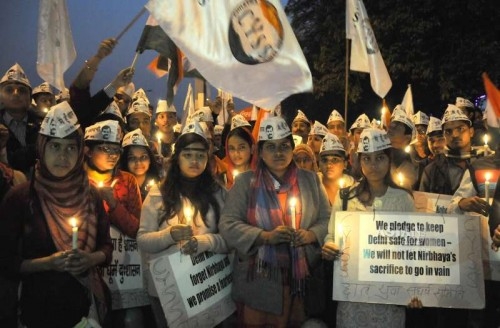
By Rajeev Poduval
The government of India recently banned the documentary film Storyville: India’s Daughter by British filmmaker Leslee Udwin breathing life into an international discussion on the supposedly growing connoisseurship of rape and violence against women in the country.
Undoubtedly, the brutality the film depicts is gruesome and raw. As the film takes us from the bloody, drunken orgy on the bus moving through the streets of New Delhi to the quite of the candlelight vigil on the riverbank with the skittering sob of the victim’s mother in the soundtrack, it becomes one of the most powerful moments on criminal violence in the documentary genre.
The decision to ban the film was the result of a gross misjudgment on the content of the film though. A closer look at the film in fact shows it never reflects badly on the country as a whole in any manner.
It is true, however, there have been attempts on the part of most Western newspapers, India’s national media, and the director herself, to project the wildly inaccurate idea that the views expressed by the sociopaths and the criminal defense lawyer in the film represent the popular opinion on rape in India. Nothing could be further from the truth.
The film itself is a testimony against this misconceived notion about India, as the response to the violent gang-rape is unprecedented as the film shows. It further shows how compassionate and caring the people of India are, and how strongly they, especially the young and educated middle class city dwellers, empathized with the victim and the family.
The tendency to trace the act of a group of criminals to the moral makeup of the society at large is totally unacceptable. The trend is evident in the choice of the title Daughter of India itself, echoing the 1957 blockbuster Hindi movie featuring the archetypal mother figure of Bollywood folklore, Mother India.
There were innumerable murder and rape cases in Europe and elsewhere that caught public imagination. The serial killer Jack the Ripper’s murder spree gave birth to a whole new branch in criminal psychology in the late nineteenth century. Since then there have been many “Rippers” operating in the same style throughout history. Curiously enough, nobody made a film called Daughters of London trying to connect it to the moral degradation of London or Great Britain!
Internationally, one rarely comes across people protesting against criminal acts with such rigor and passion as we saw in this film. Criminal acts like shootings and date rapes often make interesting dinner-table conversations but rarely go beyond that. The only incident this reviewer could think of that comes close to this is the recent Fergusson (In the state of Missouri in the U.S.) shooting incident when a white police officer shot and killed an unarmed black teenager. But in the case of the Fergusson incident both the shooting and the protest were said to have had racial undertones. Moreover, the community was divided on the issue as well as the protests.
In New Delhi, as Daughter of India shows, it was as if the whole society came forward to take the moral responsibility of the gruesome act.
The concluding section of India’s Daughter seemed to be lost in the travails of script development. The questions about societal conscience and the moral issues the film raised towards the end are totally superfluous and ill-conceived since the incident clearly has nothing to do with the moral standards of the society as such.
The scenes of extreme poverty towards the end is somewhat irrelevant too. The film shows the decadent underbelly of the city of Delhi as the breeding ground of criminal minds. But it is also true that the social upward mobility of India’s disadvantaged is far greater than those in any developing countries as the case of the unfortunate girl here itself attests. Her parents originally belonged to the underclass, and she would have been a healthcare professional had this unfortunate incident not happened.
Perhaps, the film has more to do with our criminal justice system. Strangely enough, the film hardly talks about criminal justice in a meaningful way anywhere!
According to recent news reports, Editors’ Guild of India said the ban was “wholly unwarranted”. The film should not have been banned, at least on the grounds of freedom of speech. Though the BBC response to the ban saying the film has a strong public interest message is wrong, the ban was certainly a wrong move as it gave the film the popularity it did not deserve.
.